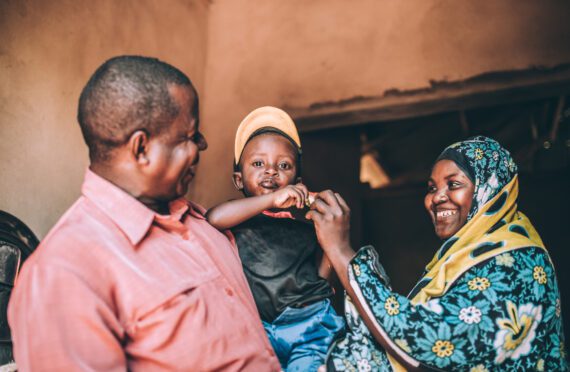By Jordan Teague, Bread for the World Institute
How much is too much to spend on ending malnutrition around the world? This may not be the right question, because answering it won’t tell us the cost of doing nothing, or what to do if the cost of doing nothing is too high.
Any time we talk about malnutrition, we are talking about preventable human suffering, whose cost is incalculable. It is not discounting the importance of all the recent progress against hunger to say that today’s hungry people, by the hundreds of millions, are telling us that the world’s priorities still need adjusting.
The financial costs can be estimated, and those calculations make it clear that the world is failing to invest anything close to what’s needed to improve the nutrition of women and children. Akinwumi Adesnia, president of the African Development Bank, said, “We must come together as a global community and accelerate action on nutrition… Failing to address malnutrition holds us back and inaction is not acceptable.” He was speaking last week at the release of a new analysis of how much it will cost to reach four of the six World Health Assembly (WHA) global nutrition targets by 2025.
The costs of malnutrition come in many different forms. Perhaps the most obvious is the impact on health. Malnutrition is a key factor in nearly half of all deaths among children under 5 — an estimated 3.1 million children every year dying because they or their mothers did not get the right nutrition. There are healthcare costs associated with these tragedies.
Children who aren’t breastfed are more vulnerable to dying of diseases such as diarrhea and pneumonia. Of course, those who lose their mothers during childbirth fall into this category. Nutrition among adolescent girls, young women, and pregnant women is often neglected. Anemia, for example, is a leading cause of maternal mortality that affects half a billion women worldwide.
Perhaps the worst realization about early childhood malnutrition – something not fully understood even 10 years ago – is that the damage is lifelong. Children who are stunted, a telltale sign of early childhood malnutrition, are more prone to disease and poor health as adults. So it’s not surprising that the economic impacts of malnutrition are considerable. Malnutrition affects children’s ability to learn and adults’ ability to work productively, so it’s not surprising that it carries significant economic impacts. Undernutrition can reduce a nation’s economy, as measured by gross domestic product (GDP), by up to 16 percent, according to the 2014 Global Nutrition Report.
What would it cost to avoid the unnecessary and large-scale impacts of malnutrition?
The new analysis looks at what it will take to reach the WHA nutrition targets on stunting (chronic malnutrition), anemia, suboptimal breastfeeding, and wasting (acute malnutrition) by 2025. It was conducted by the World Bank, the Results for Development Institute, and 1,000 Days, in partnership with the Bill & Melinda Gates Foundation and the Children’s Investment Fund Foundation (CIFF). The study found that reaching the targets will require an investment of nearly $7 billion a year for the next 10 years. (That’s in addition to what is currently being spent by donors, governments, and households).
This sounds like a lot of money. But the impact will be enormous: In 2025, 65 million fewer children will be stunted than in 2015. 265 million fewer women will suffer from anemia, 105 million more children will be exclusively breastfed, and 91 million children will be treated for severe acute malnutrition. This will all result in preventing 3.7 million child deaths.
Moreover, the costs will be shared among donors, governments, and households. For example, sharing costs could look something like this: national governments would raise an average of $4 billion more each year, while all donors combined, including the United States, the United Kingdom, Germany, and Canada, would contribute an additional $2.6 billion. Success in reducing malnutrition will come as a result of global solidarity.
Reaching the WHA global nutrition targets will put us on track for ending malnutrition, preventable child deaths, and maternal mortality – all part of the Sustainable Development Goals. All partners need to consider which costs more: stepping up to get this done, or doing nothing.
Jordan Teague is international policy analyst for food security and nutrition at Bread for the World Institute.



